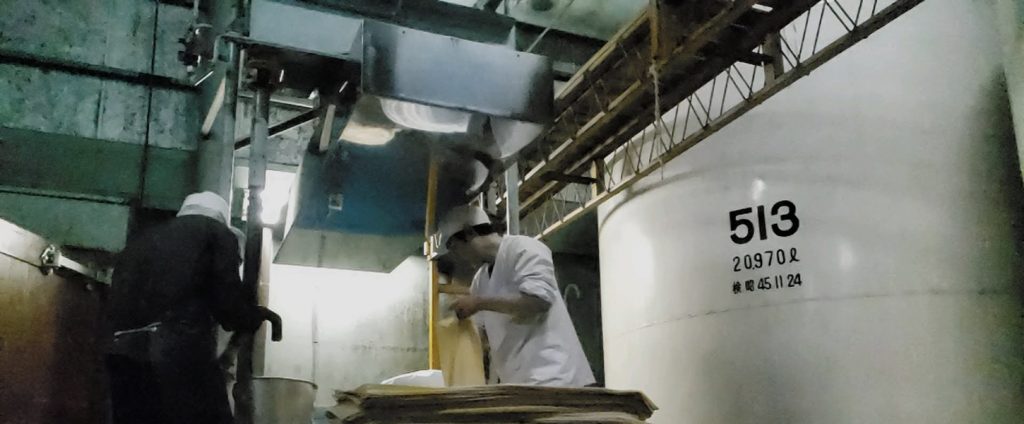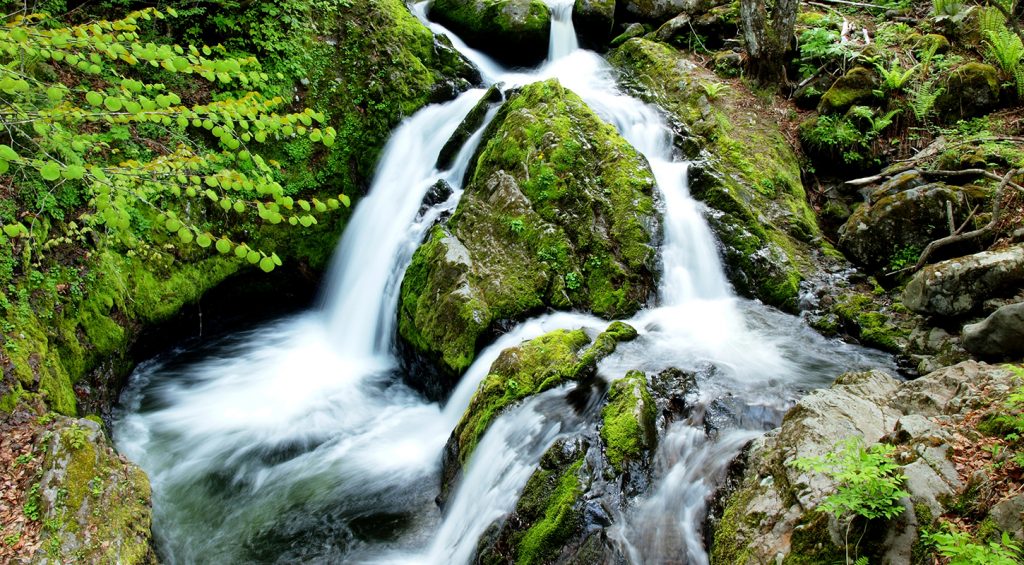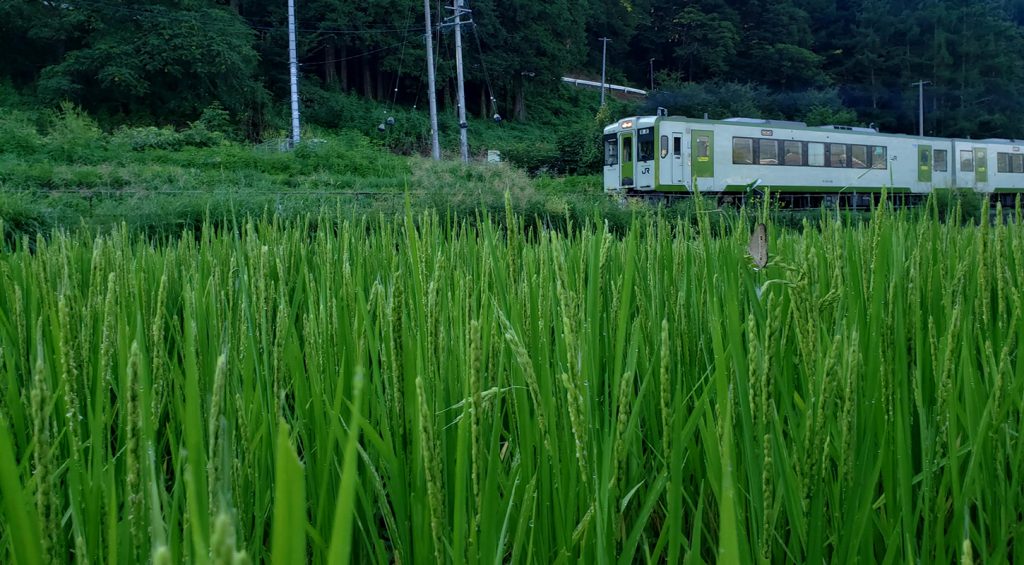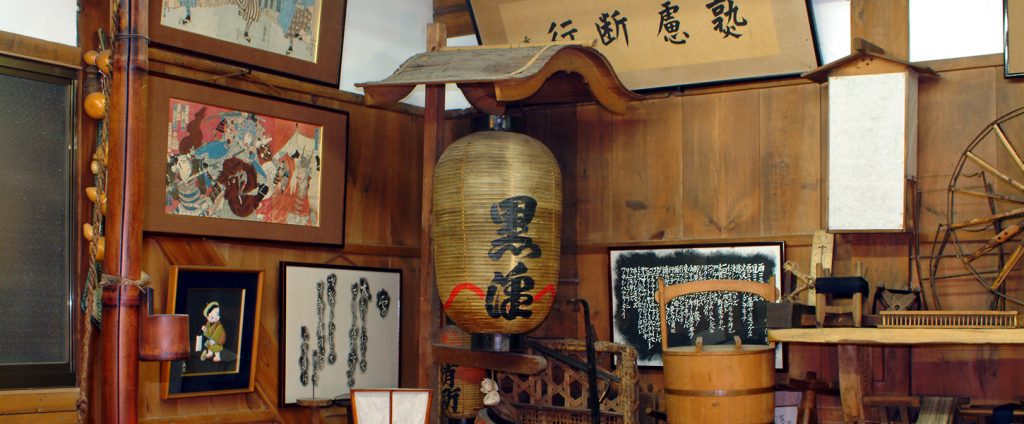Our 160 years old brewery is surrounded by a rich nature environment, deep forests, mountains including Mt. Asama to the north, Mt. Yatsugatake to the South, and is the west facing to a bright clean headstream of the longest river Shinanogawa originated from Mt. Yatsugatake.
People live from more than 10,000 years in this scenic beauty area. Sunny days year-round. Chilly winter reaches minus 15℃. Breezing comfortable summer. This environment brings out delicious Sake.

History
In 1858, Rizaemon, founded the company and started brewing sake for local supply. The sake stock certificate (permission to brew sake) that he received from the county governor at the time, is still carefully stored at our location, right where the sake brewing business began. Now, the business has been passed on to Takao Kurosawa, in its sixth generation.

Brewing Philosophy:
Respecting Tradition and Experience While Embracing New Ideas and Challenges
Sake is a great blessing from the earth, its water and nature. By taking advantage of the great natural resources of the Yatsugatake Mountains and Chikuma River, we strive to make sake that reflects and is characterized by the distinct local climate we can be proud of, and sake that can adjust its flavor to catch new trends with flexibility. Our unique kind of sake brewing is rooted in our local environment and food culture and we aim to share it from Nagano to the world.
Brewers:
Now, Yohei Kurosawa is the brew master of the brewery, or toji in Japanese. He has inherited the wealth of experience and skills of the brew masters preceding him. With passion and dedication, he and a team of 8 brewers work together to brew our current line of sake.

Skills:
Our brewery is proudly using “kimoto-zukuri” which is a traditional and labor-intensive brewing method. Although it requires twice as much time as the modern method to prepare the yeast starter, we stick to this age-old method to produce the thick-bodied sake with great depth and rich flavor.
Taste:
We strive to achieve a flavor profile of full-bodied and medium dry yet smooth, with a perfect balance of its go-mi, or five flavors: amami (sweetness), sanmi (acidity), karami (dryness), nigami (bitterness), and shibumi (astringency). Our sake can be enjoyed chilled like any other premium sake, but it really blossoms when gently warmed which brings out more richness on the palate.
Challenges:
We are always looking to expand and refine. Recently, we have been working on maturing our products in various locations, including the inside of a prefectural dam’s maintenance tunnel, under the snow at a ski resort, and in aged wine barrels. We are also developing a variety of alcoholic beverages such as craft gin, spirits, shochu, plum wine, and other unique alcoholic beverages that utilize local ingredients.

Brewing Water:
We use water from two wells in the brewery, 50m and 80m in depth. The subterranean water from the Chikuma River is soft and especially tasty. Since we regard the water as the foundation of sake brewing, we aim to preserve our high-quality water source as much as possible.

Sake Rice:
We are able to manufacture safely and reliably by being involved in the production of the agricultural crops we use as raw materials for brewing. All of our rice is cropped in Nagano Prefecture, and 100% of the rice-polishing is done in our brewery. We engage in contract farming with the motivated farmers near our brewery. With the policy of “農・酒・呑・生活 (No Sake, No Life)” which contains a play on words meaning “Agriculture・Sake・ Drink・ Life,” we are deeply involved in everything from agriculture and brewing to the local environment and culture.

Sake Museum :
Interested in visiting? Why not explore the Sake Museum? From JR Yachiho Station, it is a five-minute stroll to the Sake Museum. Along the way you can find the Okumura Togyu Memorial Art Museum as well as ancient Japanese-style warehouses. Sitting adjacent to our brewery, the Sake Museum opened after renovating an old warehouse storing historic tools, silk and cocoons.
The museum showcases the history of both Kurosawa brewing and of the local culture. Displays of ancient gear and agricultural instruments express the ethnicity and Sakuho environment. You’ll also find dioramas of the sake brewing processes, dolls and traditional sake brewing tools, antiques that have been passed down over generations, unique sake vessels collected by the previous generations during their travels throughout Japan, and impressive sake vessels with images that feature “Shoujou,” a sake loving spirit, who is the mascot of one of our sake brands “Izutsucho”.
Open: 10am to 5pm.
Admission: Free of charge.

Sake Brewery Shop & Gallery Kurosawa:
This is the brewery’s pride and joy. Here you will find a wide range of sake for purchase and tasting at the location of the original sake storehouse at the time of our establishment, which has since been removed and reconstructed. The store is equipped with a paid sake tasting dispenser providing a selection of six of our alcoholic beverages including vintage sake, seasonal sake, plum wine, and craft gin. The store sells crafts by local artists and has a gallery space for rent, which is open for local cultural exchanges and art displays
*Adjacent to the store is Cafe Kurosawa, where you can enjoy our original blend of coffee made with sake brewing water.

Sake is a Japanese traditional alcoholic beverage made from fermented rice. Its three primary ingredients – rice, rice koji (malt), water, and a variety of microorganisms such as koji mold (Aspergillus oryzae), yeast, and lactic acid bacteria among many others, play their respective roles in the fermenting process. It is our toji (brew master) and the brewers’ job to regulate and control the fermentation environment by listening attentively to these microorganisms, relying on experience and their own human senses. Even if we brew our sake in the same way each year, it would never turn out identical year after year due to various conditions – which indicates that there is an infinite potential in the art of sake brewing, depending on our brew master’s skills.
Hopefully, you will recognize this potential through the deep and rich flavor of our sake.
How to meet sake & kurosawa

Joining Kurosawa’s “bijoukai”
Written by Mr.Mike Daivs from Orange C.A